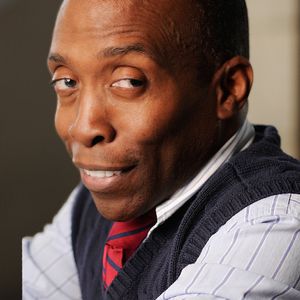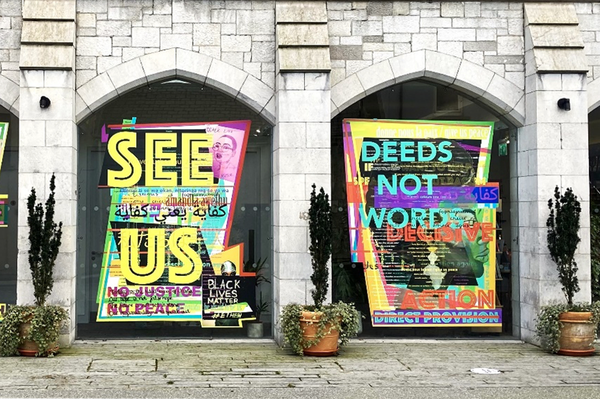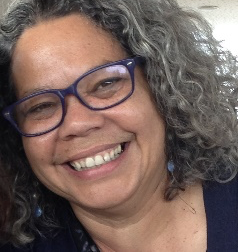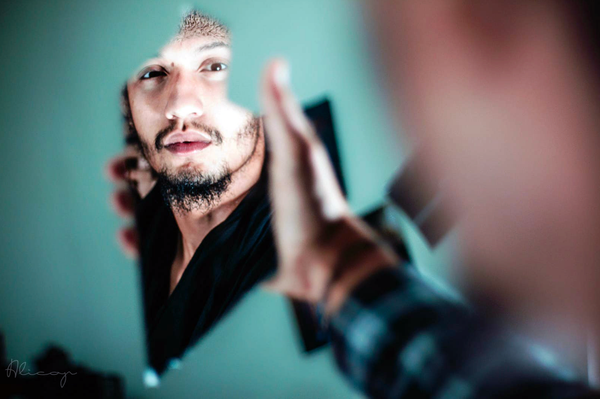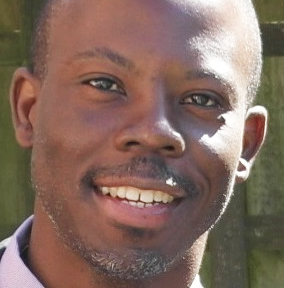Among white people the realization that racism is a major social issue seems to have landed only quite recently. Racism has been a foundational structural feature of society for centuries, at the very least since global colonialism and the cross-Atlantic slave trade. This racism has been invisible for much of the time, as it is pushed aside by the realities of existing in our world. Yet in 2020 we have had a major shift in consciousness among millions of white people around the world. To see sizeable numbers of white people at Black Lives Matter demonstrations in the US, the UK, Australia, New Zealand and parts of Europe has been both inspiring and kind of odd.
Where did this sudden awareness come from? It is not as if racism has suddenly become worse. Yes, George Floyd’s murder was especially graphic. But thousands of Black people have been killed in equally violent ways since the Civil Rights Movement of the 1960s. Before that time, lynching was still common in many parts of the US, and European colonial violence was rife across much of the world. And before that we still had slavery, and Europeans were invading lands around the globe with impunity. So what happened to cause this noticeable shift among white people? And perhaps more significantly, will it last or is it just a passing moment?
I do not know the answers, but I expect we are seeing the result of multiple variables. This includes complex social forces aligning to cause a shift in awareness with regard to racism. One of the factors that may have supported that shift is the 2018 book, White Fragility, by the white academic Robin diAngelo. This book’s premise is that all white people are racist, and that acknowledging this state of affairs is the first step to addressing it.
Surprisingly, despite this confronting claim, her book has become a bestseller. Accompanying corporate workshops have filtered into big companies and government departments across the US. The increased focus on systemic racism even attracted the ire of President Trump, as he issued an executive order seeking to ban any anti-racism workshops based on “Critical Race Theory.” This theory includes the assumption that structural racism is foundational to America, and this theory underpins diAngelo’s work.
It is important to note that diAngelo’s ideas are neither unique nor new. Critical Race Theory has been developed by academics of color since the early 1980s. And outside of academia, People of Color have been aware for a very long time that racism afflicts all white people, including their white friends, smiling neighbors, and chummy co-workers. In the ground-breaking 1994 anti-racism documentary, The Color of Fear, one Black man explains it as follows:
By white supremacy I don’t mean Neo-Nazis and I don’t mean Klan . . . I am terrified of those people on an inter-personal basis. Institutionally not terribly much. Because most of the lethal, toxic, deadly racism that African American people experience . . . does not come from them. It comes from moral, fair-minded people who believe that they are lovers of justice, church-goers, people who experience themselves as decent, and actually very nice folk. And it is there that I find my fear. –Victor Lewis in The Color of Fear
Let us pick up Victor Lewis’s thread and consider how denial of racism perpetuated by “lovers of justice” may be impacting this moment in which anti-racism work appears to be finding a greater resonance among white people than ever before. There is a very real question whether the increased willingness by white people to engage with the concept of racism will lead to substantial systemic change, or whether it will be just a passing passion, soon replaced by another pressing issue.
As anti-racism writer Marley K. wrote in a recent article, “Conversations by White people should always include racism and how it harms others, until it’s no longer a thing.” Because racism is structural and systemic, it impacts every aspect of life, including those who are most affected by climate change, a pandemic, or even the way Artificial Intelligence is programmed. So dealing with any of these important issues cannot replace our learning about and unlearning of racism; it has to go hand in hand.
The Long Work of Transforming Racism
If you have ever gotten involved in conversations about racism, or perused comment sections in articles on the issue, you will know that our white engagement with the topic is often superficial, avoiding true engagement with racism’s structural reality. There also continues to be resistance to acknowledging the reality of instances of racism among white people. Not at an absolute level — most people will agree that racism exists, but they often do so with the assumption, either implicit or explicit, that it exists only among a small number of extremists and bigots.
At the level of individual incidents, white people of all political persuasions still resist the existence of racism, again and again. This resistance usually takes the form of doubting whether a given incident of racism was racist (he was joking, she did not mean it like that, he was not ignoring her because of her race he just did not see her, the police officer was just having a bad day, and so on), and, more fundamentally, of denying that unconscious racism exists at all.
In this world view, racism is something that is visible, deliberate, and intentional. It is enacted only by card-carrying white supremacists; that is, by people who genuinely despise those of other racial backgrounds and believe it is appropriate to treat them poorly. If you are a well-intentioned white person, you cannot also be racist.
This is an incredibly simplistic and self-avoidant perspective of racism, and it is one that People of Color have spoken up against for a long time. In the same article by the already quoted Marley K., she suggests that white people suffer from what she calls Racism Attention Deficit Disorder; that is, we seem constitutionally unable to keep our attention on racism for long enough “to follow the winding road and turns of White Supremacy.” Here is another incisive statement by Victor Lewis from The Color of Fear, addressing a white group member who continuously tries to convince the People of Color in the group that the only reason they are experiencing racism is because they are so focused on their race. In his response, Victor explains:
For you to understand what racism is about, you’ll be so uncomfortable, you’ll be so different from who you see yourself to be now, that there is no way for you to get it from where you are. And I’m not saying that there is no way for you to get it, I am saying that you need to step outside of your skin and step outside of what seems really comfortable and familiar to you and launch out into, for you, some really unknown territory. —Victor Lewis in the film, “The Color of Fear”
The notion that racism is “out there” only among extremists and bigots means we do not really have to step outside of our comfort zone. Or perhaps it would be more appropriate to speak of turning inside to go beyond our comfort zone, because the key to the kind of challenging anti-racism work that Victor Lewis refers to in that passage is delving into the depths of our own conditioning and the repressed traumas that hold that conditioning in place. (I have written elsewhere about how important I as a white man have found dealing with my own traumas to be when it comes to facing my own racism.)
Viewing racism as something that is external and limited to identifiable others helps us avoid our own inner emotional work around racism. In addition, that view encourages us to resist those who keep talking about institutional racism and implicit bias. The more we refuse to examine ourselves, the more people speaking about those issues becomes troublesome to us as they keep prodding our blind spot. Consequently, it is natural that we start blaming them for creating an issue where, for us, there is none. And so we find white people claiming, again and again, that the main cause of racial tension is People of Color, and perhaps “virtue signalling” white people, who are calling out racism. It is the oldest form of denialism in the book.
Unfortunately, no matter your intentions, when you are a white person who has grown up in a nation with a white supremacist culture (which everyone in a European and European-colonized country has), you are very susceptible to people telling you that racism is confined to extremists, that we are no longer a racist society, and that those rallying against racism are just keen to show they are “woke” (if they are white) or are caught in a “victim mindset” (if they are People of Color).
Those messages are appealing because they reaffirm our fundamental goodness, they assure us that racism has largely been dealt with (save for those extremists), and they allow us to go about our life without engaging in the deep inner struggle of unpacking our own internalized and culturally perpetuated racism. After all, who wants to engage in deep inner struggle for something that does not seem to immediately impact them? I believe the lack of appeal of that proposition is one of the reasons why “actually very nice folk” will go out of their way to argue that structural racism is not an issue.
As well as structural racism, which refers to the fact that racism is built into the very structures of society, as an anthropologist I also see the issue as cultural racism; that is, something that has been passed on to us from the moment of birth by our families, schooling, social milieu, media, popular culture, and so on. Being cultural means it is in the deepest recesses of our thinking and feeling. As such, it takes a lot of self-awareness to see it. But doing the work of really looking at the cultural web of our racism is what needs to happen if the anti-racist passion of 2020 is going to lead to lasting change.
The Impact of Being Blind to Our Own Culture
I spent a few years together with a senior Aboriginal man running Aboriginal Cultural Awareness workshops in my hometown of Adelaide, Australia. It was a compulsory one-day workshop for new staff in the South Australian Justice Department, in which participants learned about traditional Aboriginal culture, how it is being maintained in the present, and importantly, about the ongoing impacts of colonization on Aboriginal people.
One of the exercises was for participants to explore the role of their own culture in their life. There was a common pattern to the responses. People of Color (a tiny proportion) and those with different European immigrant backgrounds would discuss aspects of their culture, things such as the foods that were important to them, the fact that they might have three generations living under one roof, family and social responsibilities, particular religious holidays, linguistic adaptations, and so on. By contrast, without fail, there would be one or more Anglo-Australian participants who would suggest, “I don’t really have a culture. I am just Australian.”
Everybody has a culture. It is part of being human. The reason people think they do not have a culture is because their culture is so dominant in their environment that it becomes the norm. We are normal, others have “culture”; that is practices, behaviors and beliefs that do not correspond to this norm. Being a “normal human being” and the dominant culture are seen as synonymous, and so we become unconscious of our culture. In that respect, culture is like air. We only notice it when it is missing, such as when we move out of our comfort zone and spend time immersed in another culture.
But what if racism were part of our culture? We would not even know it was in the mix unless we looked carefully. Having engaged in an exploration of the cultural roots of my own racism (through the help of a number of excellent educational programs run by People of Color, including programs by Stirfry Education and ReMember Institute), and on the basis of my longstanding work in anthropology, I can state unequivocally that racism is part of the dominant culture in European and European-colonized countries. It has been fostered for centuries to justify the colonization and enslavement of African and other people, until it became an unconscious norm to view such people as both “lesser” and “more dangerous” than Europeans.
The invisibility of this racism, which is simply part of our cultural DNA, is why we get “good white people”; that is is, people describing themselves as progressive and liberal, who end up undermining anti-racism work. Either they do not accept or they do not even realize how insidious the tendrils of racism in our society and our own psyches are. They do not act because they do not see. And often, I believe, they do not want to see because looking at the reality of racism and the way it lives in us is painful.
As someone who works in a field where recounting life histories beset by racism is an important part of a legal process, I know first-hand my desire to avoid this reality. Racial violence requires us to face the ugliest of human actions and really understand the many levels at which they impact people. It is painful. Of course we want to by-pass all of the muck and gore and go straight to a present in which we can claim the worst excesses of racism are behind us and all we are left with now are some backward stragglers who did not get the memo. But that is not how it works.
Both psychology and genetics tell us that traumas and psychological patterns are passed down the generations. Not just those of the victims, but those of the perpetrators too. We cannot fully shift or heal them by being avoidant. We can only do so by turning towards reality, owning it and deciding to do better.
Originally published in Our Human Family at Medium.
Photo by Marlon Schmeiski from Pexels




